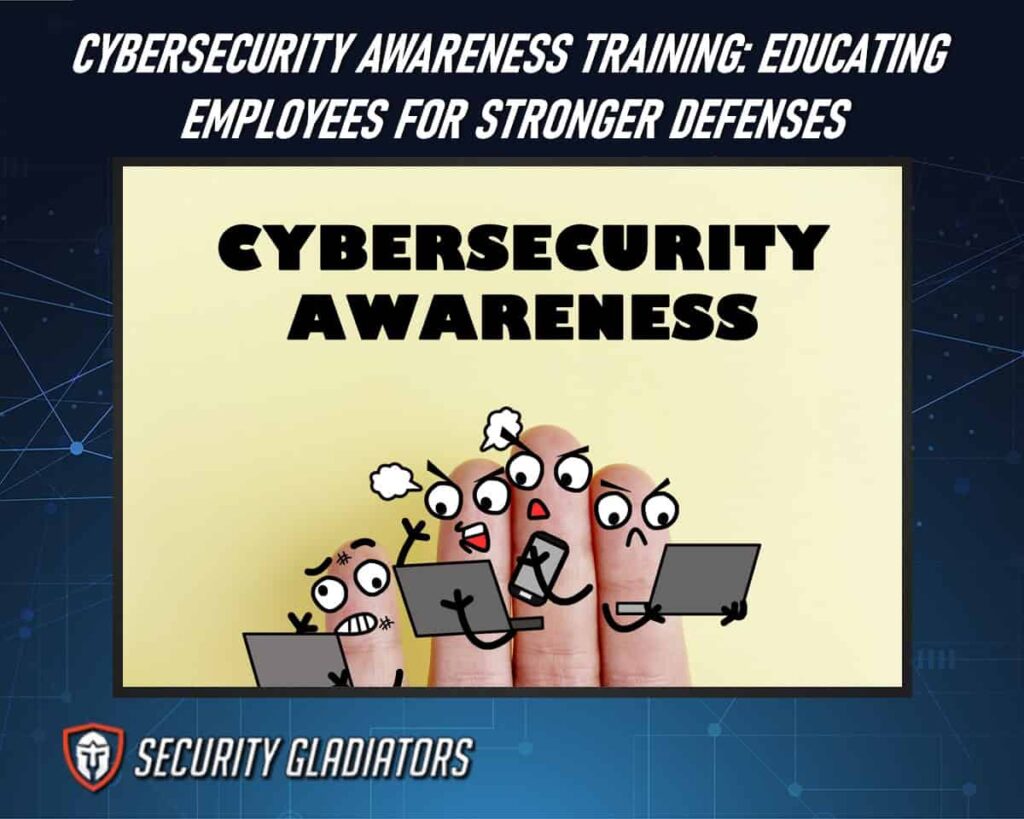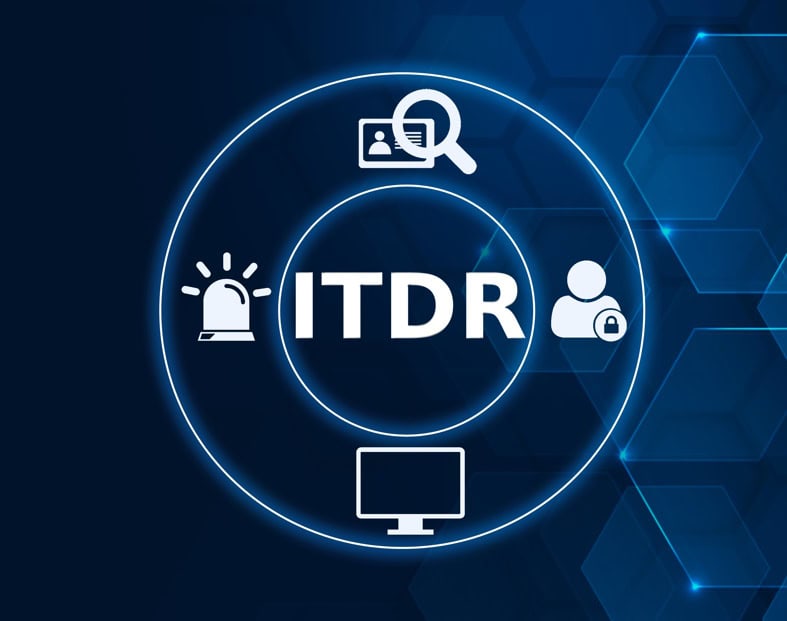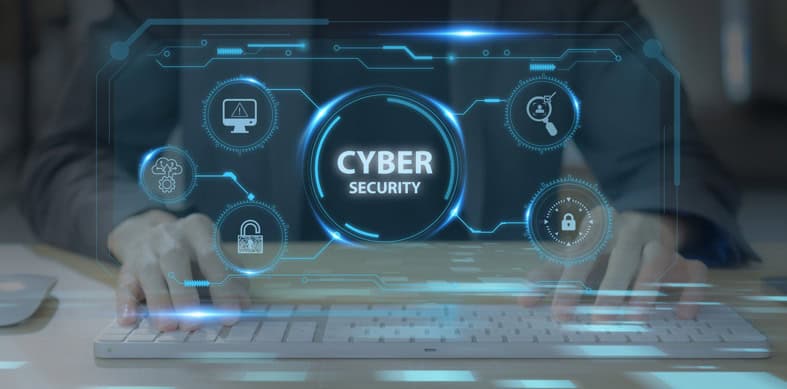
Table of Contents
Importance of Cybersecurity Awareness Training
Cybersecurity awareness training for employees is crucial for several reasons:
Risk Reduction
Educating employees helps mitigate vulnerabilities, minimizing the likelihood of successful cyberattacks.
Compliance
Training ensures adherence to industry regulations and standards, avoiding costly penalties for non-compliance.
Incident Response
Awareness empowers employees to recognize and report security incidents promptly, facilitating faster response and mitigation.
Creating a Security-Conscious Culture
By fostering a culture of cybersecurity awareness, organizations instill a sense of responsibility among employees towards protecting the organization’s digital assets. This culture encourages proactive behavior and promotes collaboration in addressing security concerns.
Protection of Assets
By understanding cybersecurity best practices, employees safeguard valuable data and assets, preserving the organization’s reputation and integrity.
Guidance on Implementing Cybersecurity Awareness Programs
Implementing cybersecurity awareness programs in organizations is crucial to mitigate security risks and empower employees to protect sensitive information. Here’s a comprehensive cybersecurity awareness training guide:
Educating Employees About Identity Threat Detection and Response
In cybersecurity awareness training, educating employees on Identity Threat Detection and Response (ITDR) is crucial for bolstering defenses against evolving cyber threats. By equipping employees with the knowledge to recognize suspicious activities and phishing attempts, organizations can mitigate the risks of identity theft and unauthorized access to sensitive information. The ITDR training provided by platforms like Adaptive Shield Academy empowers employees to proactively identify and report potential security incidents, fostering a culture of vigilance and resilience within the organization.

Integrating Simulations and Exercises
Incorporating phishing simulations and interactive training modules into the security awareness training program can significantly enhance employees’ ability to identify potential threats and respond effectively to cyber attacks. By simulating real-world scenarios, employees can experience firsthand the tactics used by cybercriminals, enabling them to recognize suspicious emails, links, or requests.
Implementing Phishing Awareness Campaigns
To strengthen cybersecurity awareness training programs for employees, incorporating phishing awareness campaigns is essential for fostering a culture of vigilance and readiness within the organization. Phishing awareness campaigns aim to educate employees on how to recognize phishing attempts effectively. By integrating these campaigns into the security awareness program, organizations can empower employees with the knowledge and skills needed to identify and respond to potential threats.
Providing specific training for employees on differentiating legitimate emails from phishing attempts can significantly enhance the organization’s overall cybersecurity posture. Regularly updating and reinforcing these campaigns will help employees stay informed about evolving cyber threats and ensure they remain proactive in safeguarding sensitive information.
Encouraging Secure Password Practices
Encouraging employees to implement secure password practices is essential in bolstering an organization’s defense against cyber threats. To achieve this, organizations should focus on the following strategies:
Password Management
Regularly updating passwords and avoiding reuse across multiple accounts.
Cyber Security Training
Incorporating password best practices into the organization’s training program to increase cyber security awareness.
Reporting Security Incidents and Suspicious Activity
Highlighting the significance of promptly reporting security incidents and suspicious activity is crucial in fortifying an organization’s cyber defense strategy. Reporting security incidents, such as data security breach or cyber attack, enables swift response measures to be implemented, potentially mitigating the impact of the incident.
Additionally, reporting suspicious activity, which could indicate insider threats, allows for early detection and investigation of potential security risks within the organization. By encouraging employees to report any unusual or concerning behavior, organizations can proactively address vulnerabilities and prevent potential security breaches. Timely reporting not only safeguards sensitive data and systems but also fosters a culture of vigilance and responsibility among employees, enhancing overall cybersecurity resilience.
Continuous Training and Updating Policies
Employees need consistent cybersecurity training and updated policies to stay informed and prepared against evolving threats. To effectively enhance security posture and mitigate security risks, organizations should prioritize continuous training and updating policies. This involves:
Regular Training Sessions
Conduct periodic cybersecurity awareness training to educate employees on the latest threats and best practices.
Policy Reviews and Updates
Regularly review and update security policies to align with current cybersecurity trends and strategies, ensuring they remain effective in safeguarding against emerging threats.
Common Cyber Threats Faced by Employees
Common cyber threats faced by employees include:
Phishing Attacks
Malicious emails, often disguised as legitimate communications, aim to trick employees into divulging sensitive information like login credentials or financial details.
Social Engineering
Manipulative tactics, such as pretexting or baiting, exploit human psychology to deceive employees into disclosing confidential information or performing unauthorized actions.
Malware Infections
Malicious software, including viruses, ransomware, and spyware, can infiltrate systems through infected email attachments, links, or downloads, potentially causing data loss or system damage.
Password Attacks
Techniques like brute force attacks or password spraying target weak or reused passwords to gain unauthorized access to employee accounts, compromising sensitive data.
Man-in-the-Middle (MitM) Attacks
Hackers intercept communication between employees and legitimate systems, allowing them to eavesdrop, manipulate data, or steal information transmitted over insecure networks.
Elements of an Effective Training Program
Elements of an effective cybersecurity training program include:
Tailored Content
Customized training materials that address the specific cybersecurity risks and challenges faced by the organization, ensuring relevance and engagement.
Interactive Learning
Engaging and interactive content, such as videos, simulations, quizzes, and hands-on exercises, to promote active participation and reinforce learning.
Regular Updates
Ongoing updates to training materials to reflect emerging threats, industry best practices, and changes in technology, keeping the program current and effective.
Senior Leadership Support
Visible support and endorsement from senior leadership, emphasizing the importance of cybersecurity awareness and fostering a culture of security throughout the organization.
Measurable Outcomes
Defined metrics and key performance indicators (KPIs) to assess the effectiveness of the training program, such as the number of reported incidents, employee compliance with security policies, and changes in behavior over time.
Measuring the Effectiveness of Cybersecurity Awareness Training
To evaluate the impact of a successful security awareness program, organizations must implement measurable assessment methods. Measuring the effectiveness of training is crucial in determining the success of efforts to enhance the security culture within a company. By analyzing metrics such as the reduction in human error incidents, the results of simulated phishing exercises, and the outcomes of security knowledge assessments, organizations can gauge the level of improvement in their employees’ cybersecurity awareness.

Additionally, conducting regular risk assessments before and after training sessions can provide insights into areas that require further focus. Establishing clear benchmarks and key performance indicators will enable organizations to track progress and make informed decisions to continuously strengthen their cybersecurity posture.
Frequently Asked Questions
Can Employees Opt out of Cybersecurity Awareness Training if They Feel They Already Have Sufficient Knowledge in the Area?
Employees should not opt out of cybersecurity awareness training based on personal perceptions of knowledge. Continuous education is crucial due to evolving threats. Compliance with training ensures a collective understanding of security practices and fosters a culture of vigilance.
How Often Should Cybersecurity Awareness Training Be Updated to Remain Effective in Combating Evolving Cyber Threats?
Regular updates to cybersecurity awareness training are essential to combat evolving cyber threats effectively. It is recommended to review and refresh the training content at least annually, while staying proactive in monitoring industry trends for potential adjustments.
Are There Any Legal Implications for Companies if Employees Fail to Adhere to Cybersecurity Best Practices After Training?
Non-compliance with cybersecurity best practices post-training can expose companies to legal ramifications. Failure to adhere to established security protocols may result in data breaches, financial losses, regulatory fines, and damage to reputation, emphasizing the importance of employee adherence.
Conclusion
Cybersecurity awareness training plays a critical role in equipping employees with the knowledge and skills necessary to defend against evolving cyber threats. By fostering a culture of vigilance and accountability, organizations can empower their workforce to recognize and respond to potential security risks, ultimately strengthening the overall resilience of their cybersecurity posture. With ongoing education and proactive measures, employees become invaluable assets in safeguarding sensitive information and preserving the integrity of organizational assets.
